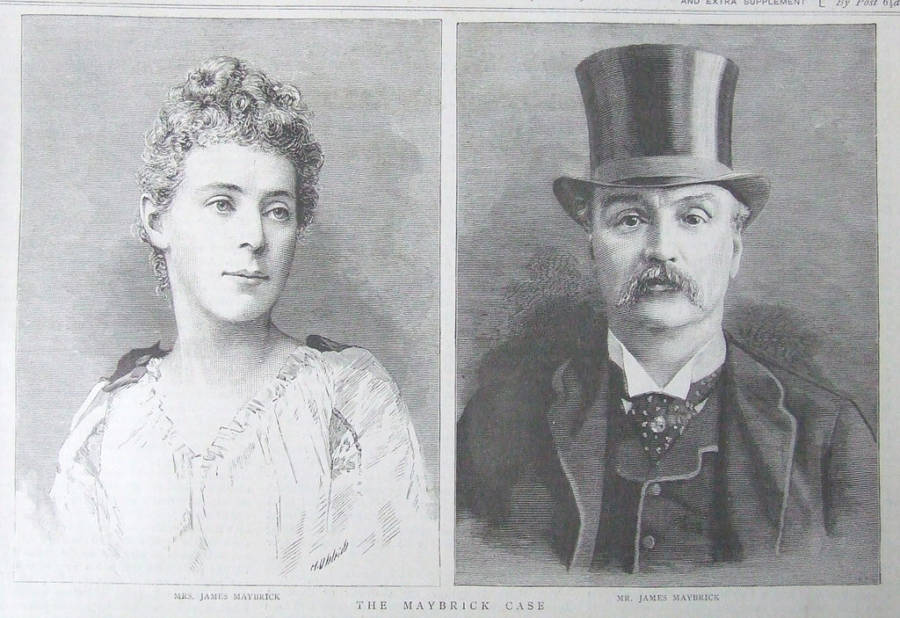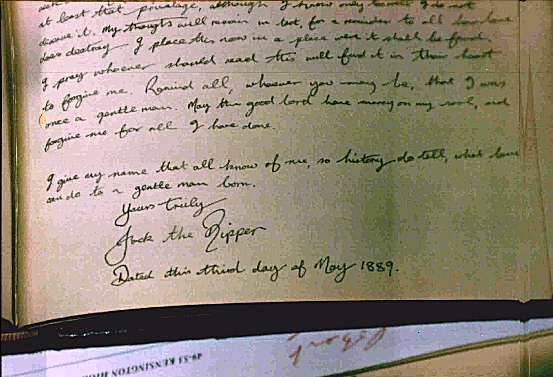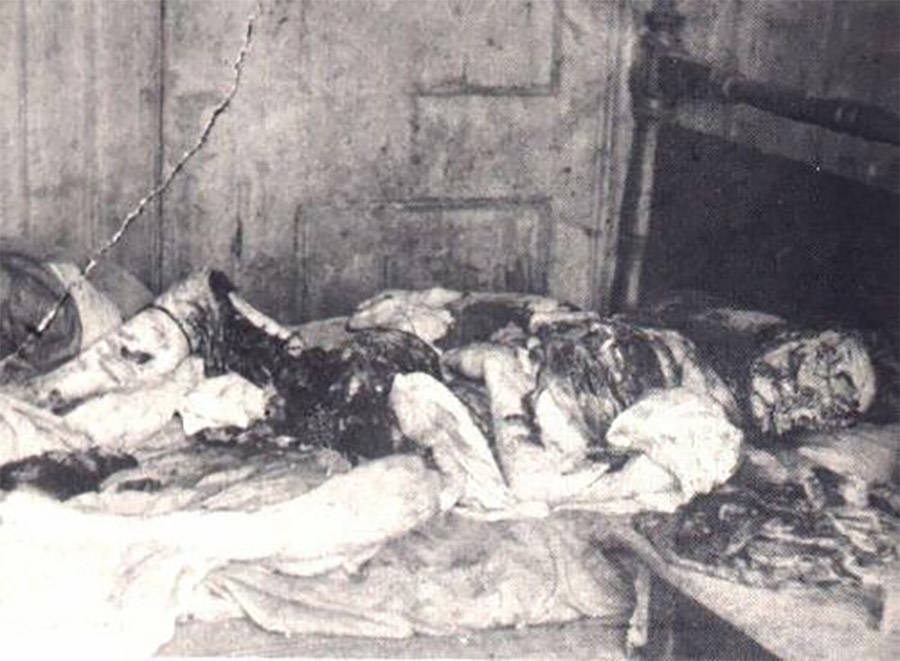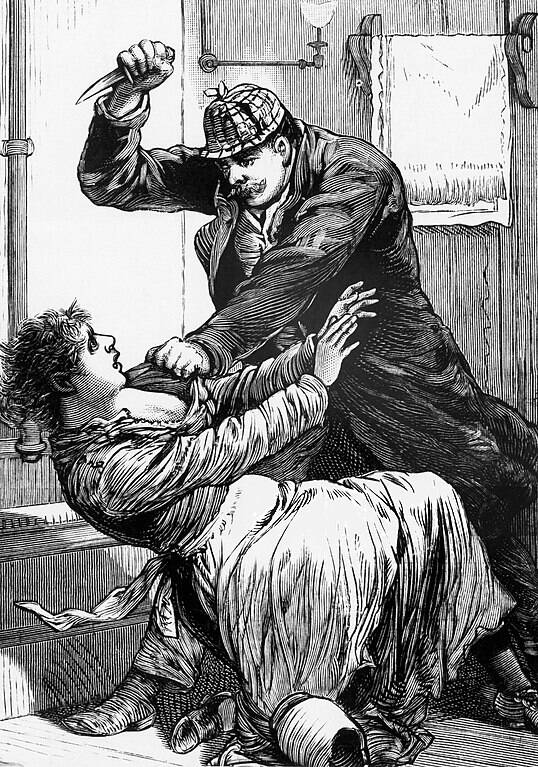A diary allegedly written by James Maybrick not only reveals that its author was Jack the Ripper, but contains grisly details of the Ripper murders that only the killer would know.

Hulton Archive/Getty ImagesJack the Ripper suspect James Maybrick, circa 1885.
In 1888, London was terrorized by an elusive serial killer known only as Jack the Ripper. The killer primarily targeted sex workers in the impoverished Whitechapel district, slitting their throats before brutally mutilating their bodies.
For the last 130 years, Jack the Ripper’s crimes have endured as some of the most grisly in the history of true crime while his identity has remained one of the great unsolved mysteries of our time.
But in 2017, author Robert Smith published 25 Years of The Diary of Jack the Ripper: The True Facts, in which he claimed to have verified the authenticity of a diary allegedly containing one man’s confession to being Jack the Ripper.
The man in question was James Maybrick, a mysterious 19th-century Liverpool cotton merchant. And while Maybrick has now emerged as one of the leading “Jack the Ripper” suspects, Maybrick was once the center of an entirely different “murder” case — as an alleged victim.
Who Was James Maybrick?

Wikimedia CommonsFlorence Maybrick and James Maybrick. 1889.
James Maybrick was born in Liverpool in 1838. A successful international cotton merchant, he met a young American woman named Florence Chandler while traveling for work and, although she was 23 years his junior at 18 years old, they married in 1881. The couple had two children, the Liverpool Echo reports.
While little is known about Maybrick’s life, it’s believed that he regularly self-medicated with arsenic and other drugs and that he had an unhappy marriage, with both Maybrick and Florence supposedly engaging in extramarital affairs.
When Maybrick suddenly fell ill and died in May 1889, his family felt that his death was suspicious, and a local inquest found that arsenic poisoning was the likely cause. Florence, who had confessed to having committed adultery, soon became the chief suspect. The all-male jury convicted her of Maybrick’s murder despite there being insufficient evidence to prove her guilt.
However, the proceedings were flimsy enough to eventually allow Florence’s sentence to be commuted from death to life in prison, and then for her to be released in 1904 following a re-examination of her case.
And while many modern-day experts now believe Florence was innocent, some suspect James Maybrick himself may have become a killer.
The Alleged Diary Of Jack The Ripper

Public DomainA page from a diary allegedly belonging to James Maybrick, signed “Jack the Ripper.”
In 1992, a former scrap metal merchant from Liverpool named Michael Barrett claimed he had found a diary belonging to James Maybrick — and that it provided evidence that Maybrick was Jack the Ripper.
The 9,000-word diary indeed contains clear confessions to the five murders credited to Jack the Ripper, as well as two others. The author signs off with the following words, reports The Telegraph:
“I give my name that all know of me, so history do tell, what love can do to a gentleman born. Yours Truly, Jack The Ripper.”
The diary also reportedly shares details of the killings many experts say only the true murderer could have known. However, the author never reveals his real name, leaving room for the possibility that it didn’t belong to James Maybrick — though certain references in the diary are consistent with details of Maybrick’s life.
For example, according to Historic Mysteries, the author claims he caught his wife cheating on him in the Whitechapel district of London. According to the diary, it was his wife’s infidelity that set him on his murderous path, taking out his rage out on innocent women — and especially sex workers — in Whitechapel.
What’s more, some eagle-eyed Ripperologists claim that in a police photograph from the scene of the murder of Mary Jane Kelly, one of Jack the Ripper’s victims, some of the blood splatter on the wall appears to form the initials “F.M.” Some believe “F.M.” was Florence Maybrick, and that Jack the Ripper wrote these initials in blood in reference to his wife.

Wikimedia CommonsThe corpse of Mary Kelly, one of Jack the Ripper’s victims. The initials “F.M.” appear to be written on the wall just behind her.
The diary is also dated May 3, 1889, according to Crime + Investigation — placing it after the five canonical Jack the Ripper murders took place, and just a few days before James Maybrick’s sudden death.
The Debate Over The Diary’s Authenticity
The diary’s authenticity has long been mired in doubt. This is in part because after Barrett shared the diary with the public in 1992, he offered several different stories as to where it came from.
Initially, he claimed it been gifted to him by a now-deceased friend. Later, he claimed the diary had come from his wife, and that it had been passed down in her family “for as long as she could remember.”
Then, in 1995, Barrett signed an affidavit stating that the diary was a forgery — only to later retract this claim.

Wikimedia CommonsAn 1889 illustration depicting Jack the Ripper murdering one of his victims.
But in 2017, Robert Smith’s research claimed to have proven that the diary was actually found in James Maybrick’s former home in Aigburth and that it was written by Maybrick himself in 1889.
Smith, the diary’s publisher and current owner, referred to job timesheets from 1992 to outline how electricians working on the former Maybrick home found the diary underneath the floorboards on March 9, 1992. The workers then gave it to Barrett in hopes that he could sell it to a publisher.
Smith has always persisted in believing that the diary is authentic. As he explained:
“I have never been in any doubt that the diary is a genuine document written in 1888 and 1889. The new and indisputable evidence, that on 9th March 1992, the diary was removed from under the floorboards of the room that had been James Maybrick’s bedroom in 1889, and offered later on the very same day to a London literary agent, overrides any other considerations regarding its authenticity. It follows that James Maybrick is its most likely author. Was he Jack the Ripper? He now has to be a prime suspect, but the disputes over the Ripper’s identity may well rage for another century at least.”
Was James Maybrick Really Jack The Ripper?
Despite Smith’s strong beliefs in the diary, opinion at large has remained divided. Scientific tests on the diary’s inks proved inconclusive as to whether or not they were actually from the late 19th century. Meanwhile, other scientific analysis has identified a different suspect, Aaron Kosminski, as the culprit.
Furthermore, a pocket watch was found in 1993, bearing engravings reading “J. Maybrick,” “I am Jack,” and containing the initials of the five victims: Mary Ann Nichols, Annie Chapman, Elizabeth Stride, Catherine Eddowes, and Mary Jane Kelly. Tests on the watch were not fully conclusive but suggested that it was not a modern forgery.

Nevertheless, Barrett’s statements about the diary’s origins and his 1995 affidavit, among other factors, continue to cast doubt upon the diary.
For some, the Ripper case is closed. But with details so hazy, we may never know for certain if James Maybrick was actually one of history’s most infamous killers.
After this look at James Maybrick, read up on some of the other suspects believed to be Jack the Ripper. Then, discover the forgotten stories behind Jack the Ripper’s victims.





